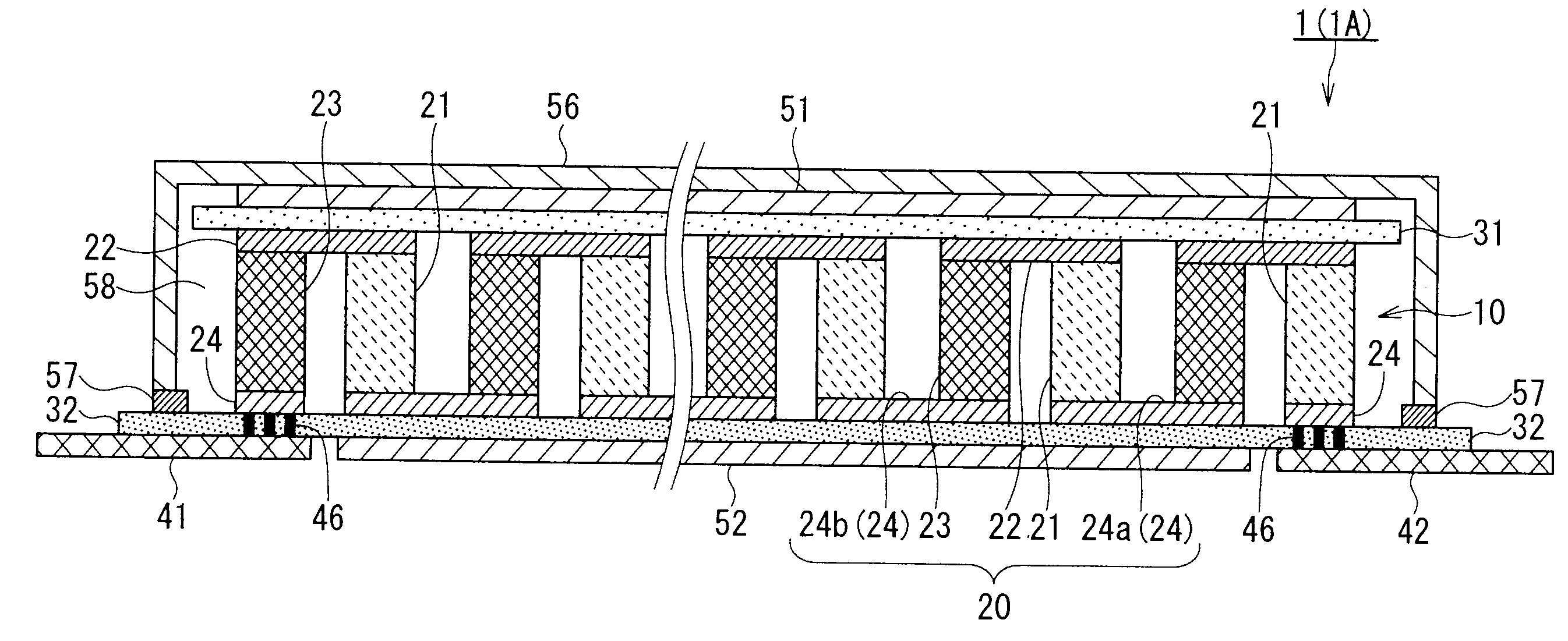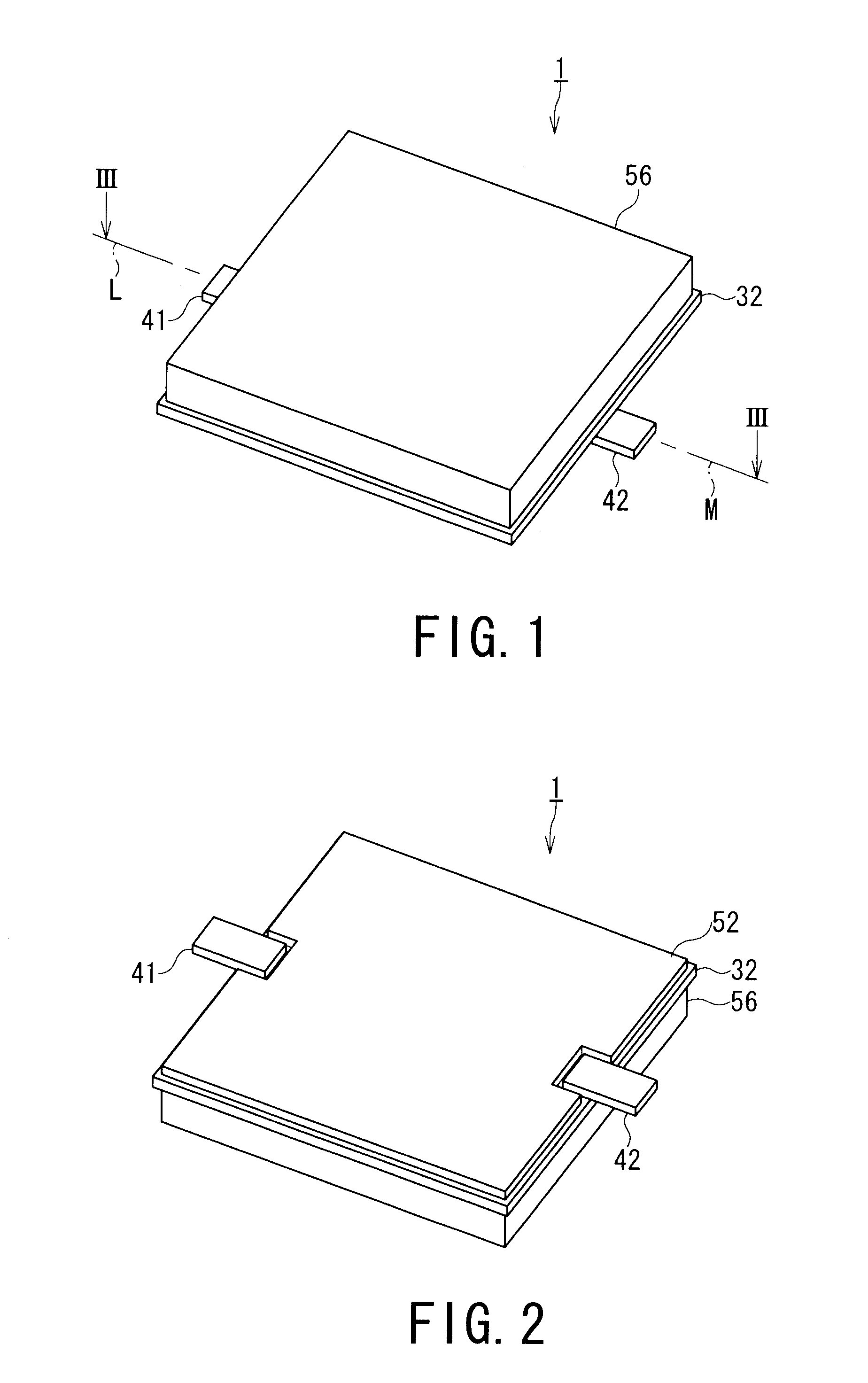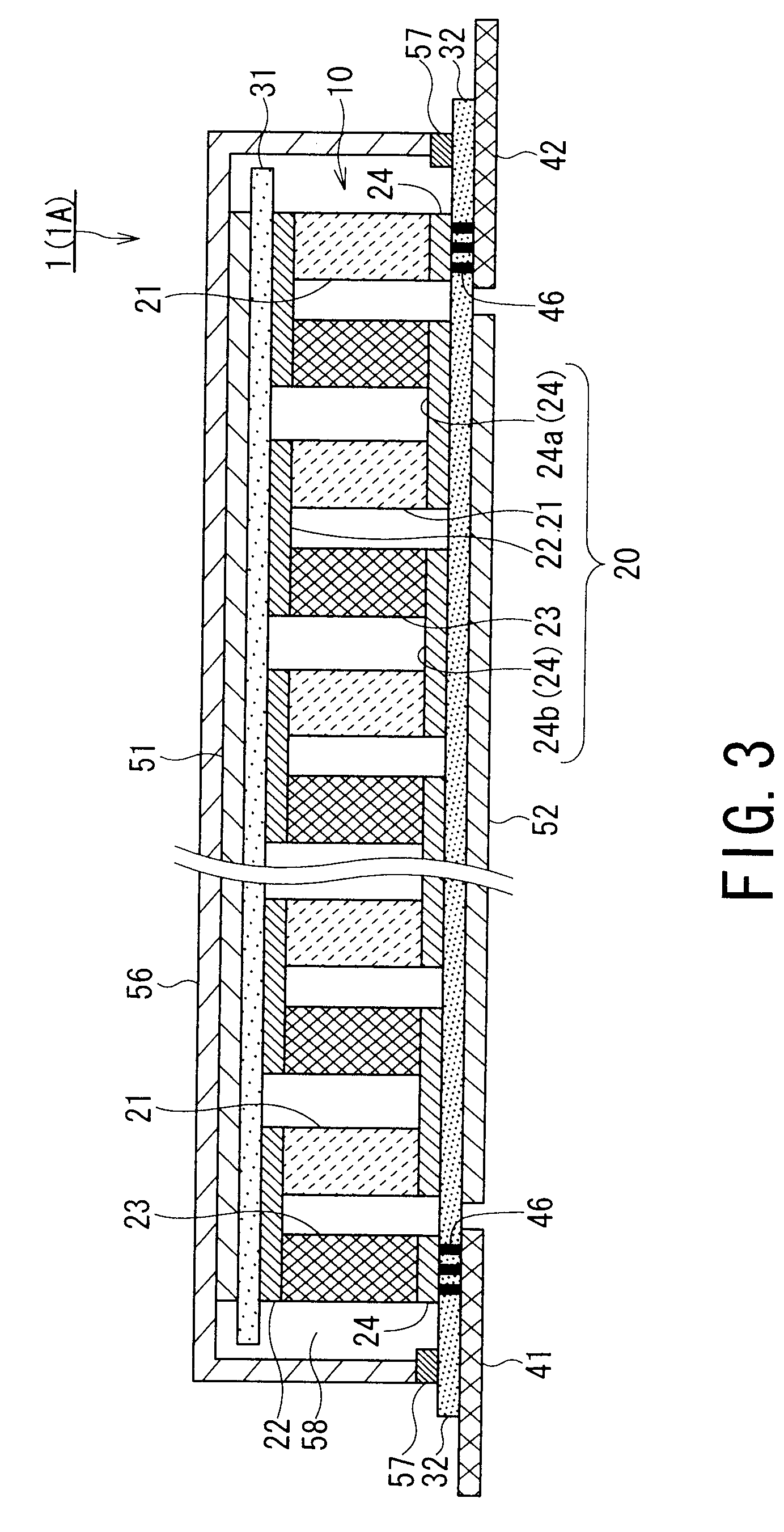Thermoelectric conversion module and thermoelectric conversion apparatus
a technology of thermoelectric conversion module and thermoelectric conversion apparatus, which is applied in the direction of lighting and heating apparatus, machines using electric/magnetic effects, refrigerating machines, etc., can solve the problems of global warming, insufficient efficiency of thermoelectric conversion system for small or medium amount of waste heat generated from small and medium plants, and extremely low power generation efficiency, etc., to achieve superior cost and space, and high power generation per installation area
- Summary
- Abstract
- Description
- Claims
- Application Information
AI Technical Summary
Benefits of technology
Problems solved by technology
Method used
Image
Examples
first embodiment
[0044]FIG. 1 is a perspective view of a thermoelectric conversion module 1 according to a first embodiment of the present invention. FIG. 2 is a perspective view of the thermoelectric conversion module 1 shown in FIG. 1 when viewed from the rear side. FIG. 3 is a sectional view of the thermoelectric conversion module 1 taken along line III-III of FIG. 1.
[0045]As shown in FIG. 1 and FIG. 2, the thermoelectric conversion module 1 includes a low temperature insulating layer 32, a casing 56 defining an enclosed housing space 58 in cooperation with the low temperature insulating layer 32, a first external electrode 41, and a second external electrode 42. A thermoelectric conversion portion 10 is housed in the housing space 58 defined by the low temperature insulating layer 32 and the casing 56.
[0046]As shown in FIG. 3, the thermoelectric conversion portion 10 includes low temperature electrodes 24 and a set of n-type thermoelectric conversion semiconductor layer 21 and p-type thermoelect...
second embodiment
[0102]A thermoelectric conversion module according to a second embodiment of the present invention will now be described with reference to FIGS. 8 and 9.
[0103]The thermoelectric conversion module 1A according to the second embodiment has the same structure as the thermoelectric conversion module 1 of the first embodiment, except that a first external electrode 41A and a second external electrode 42A are used instead of the first external electrode 41 and the second external electrode 42. The same parts in the drawings are designated by the same reference numerals, and the descriptions of the same parts will be simplified or omitted.
[0104]FIG. 8 is a plan view of the thermoelectric conversion module 1A according to the second embodiment of the present invention, and FIG. 9 is a bottom view of the thermoelectric conversion module 1A.
[0105]The first external electrode 41A and second external electrode 42A of the thermoelectric conversion module 1A are disposed with the thermoelectric c...
third embodiment
[0111]A thermoelectric conversion module according to a third embodiment of the present invention will now be described with reference to FIG. 10.
[0112]The thermoelectric conversion module 1B of the third embodiment has the same structure as the thermoelectric conversion module 1 of the first embodiment, except that a first external electrode 41B and a second external electrode 2B are used instead of the first external electrode 41 and the second external electrode 42. The same parts in the figure are designated by the same reference numerals, and the descriptions of the same parts will be simplified or omitted.
[0113]FIG. 10 is a perspective view of the thermoelectric conversion module 1B according to the third embodiment of the present invention.
[0114]The first external electrode 41B and second external electrode 42B of the thermoelectric conversion module 1B are made of the same electroconductive metal plate as the first external electrode 41 and second external electrode 42 of th...
PUM
 Login to View More
Login to View More Abstract
Description
Claims
Application Information
 Login to View More
Login to View More - R&D
- Intellectual Property
- Life Sciences
- Materials
- Tech Scout
- Unparalleled Data Quality
- Higher Quality Content
- 60% Fewer Hallucinations
Browse by: Latest US Patents, China's latest patents, Technical Efficacy Thesaurus, Application Domain, Technology Topic, Popular Technical Reports.
© 2025 PatSnap. All rights reserved.Legal|Privacy policy|Modern Slavery Act Transparency Statement|Sitemap|About US| Contact US: help@patsnap.com



